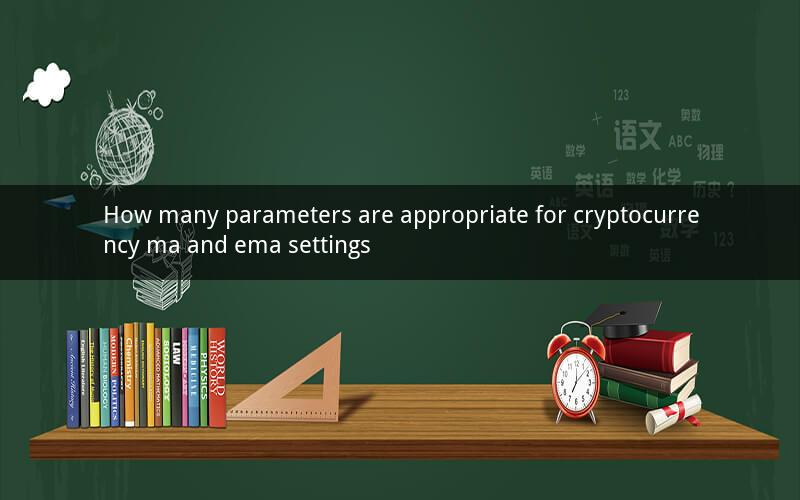
Table of Contents
1. Introduction to Cryptocurrency Moving Averages (MA) and Exponential Moving Averages (EMA)
2. Understanding the Role of Parameters in MA and EMA
3. Factors Influencing the Number of Parameters
4. The Importance of Historical Data in Parameter Selection
5. Analyzing the Effectiveness of Different Parameter Settings
6. Practical Examples of MA and EMA Parameter Settings
7. Balancing Accuracy and Overfitting
8. The Role of Time Frame in Parameter Selection
9. Conclusion
1. Introduction to Cryptocurrency Moving Averages (MA) and Exponential Moving Averages (EMA)
Moving averages (MA) and exponential moving averages (EMA) are commonly used technical indicators in the cryptocurrency market. These indicators help traders identify trends, support and resistance levels, and potential entry and exit points. MA calculates the average price of a cryptocurrency over a specific period, while EMA gives more weight to recent prices, making it more responsive to price changes.
2. Understanding the Role of Parameters in MA and EMA
The parameters of MA and EMA refer to the number of periods used in their calculations. For example, a 50-day MA calculates the average price of a cryptocurrency over the past 50 days. The choice of parameters can significantly impact the accuracy and reliability of these indicators.
3. Factors Influencing the Number of Parameters
Several factors influence the selection of MA and EMA parameters:
- Market Volatility: In highly volatile markets, shorter-term parameters are preferred to capture price movements effectively.
- Market Trends: Traders often use longer-term parameters to identify long-term trends, while shorter-term parameters are used for short-term trading.
- Time Frame: The time frame of the trading strategy can also influence parameter selection. For example, a day trader may use shorter-term parameters, while a long-term investor may use longer-term parameters.
4. The Importance of Historical Data in Parameter Selection
Historical data plays a crucial role in parameter selection. Traders analyze past price movements to identify patterns and trends that can help them determine appropriate parameters. By examining historical data, traders can gain insights into the market's behavior and make informed decisions.
5. Analyzing the Effectiveness of Different Parameter Settings
To determine the effectiveness of different parameter settings, traders can perform backtesting. Backtesting involves analyzing historical data to see how a trading strategy would have performed in the past. This process helps traders identify the best parameters for their trading style.
6. Practical Examples of MA and EMA Parameter Settings
Here are some practical examples of MA and EMA parameter settings for different trading strategies:
- Short-term Trading: 5-day MA, 10-day EMA
- Medium-term Trading: 20-day MA, 50-day EMA
- Long-term Trading: 100-day MA, 200-day EMA
7. Balancing Accuracy and Overfitting
While it's essential to choose appropriate parameters, traders must also be cautious of overfitting. Overfitting occurs when a trading strategy is too complex and tailored to historical data, leading to poor performance in real-time trading. To avoid overfitting, traders should keep their strategies simple and avoid relying solely on MA and EMA parameters.
8. The Role of Time Frame in Parameter Selection
The time frame plays a crucial role in parameter selection. Traders should consider the following when choosing a time frame:
- Daily Time Frame: Suitable for short-term and medium-term trading strategies.
- Weekly Time Frame: Ideal for medium-term and long-term trading strategies.
- Monthly Time Frame: Best for long-term trading strategies.
9. Conclusion
Choosing the appropriate number of parameters for MA and EMA settings is crucial for successful cryptocurrency trading. By considering factors such as market volatility, historical data, and time frame, traders can select parameters that align with their trading style and goals. However, it's essential to balance accuracy and overfitting to ensure long-term success.
Questions and Answers
1. What is the difference between MA and EMA?
- MA calculates the average price of a cryptocurrency over a specific period, while EMA gives more weight to recent prices.
2. Why are parameters important in MA and EMA?
- Parameters determine the number of periods used in the calculations, which can impact the accuracy and reliability of the indicators.
3. How do market volatility and trends affect parameter selection?
- High volatility markets require shorter-term parameters, while long-term trends can be identified using longer-term parameters.
4. What is the role of historical data in parameter selection?
- Historical data helps traders analyze past price movements and identify patterns and trends that can inform parameter selection.
5. How can traders avoid overfitting when selecting parameters?
- Traders should keep their strategies simple and avoid relying solely on MA and EMA parameters.
6. What are some practical examples of MA and EMA parameter settings?
- Short-term trading: 5-day MA, 10-day EMA; Medium-term trading: 20-day MA, 50-day EMA; Long-term trading: 100-day MA, 200-day EMA.
7. How does the time frame influence parameter selection?
- Daily time frame: Suitable for short-term and medium-term trading; Weekly time frame: Ideal for medium-term and long-term trading; Monthly time frame: Best for long-term trading.
8. What is the importance of balancing accuracy and overfitting?
- Balancing accuracy and overfitting ensures long-term success by avoiding overly complex strategies tailored to historical data.
9. How can traders perform backtesting to determine the effectiveness of different parameter settings?
- Traders can analyze historical data to see how a trading strategy would have performed in the past, helping them identify the best parameters.
10. Why is it crucial to choose appropriate parameters for MA and EMA settings?
- Choosing the right parameters can lead to more accurate and reliable trading decisions, ultimately improving the chances of success in the cryptocurrency market.